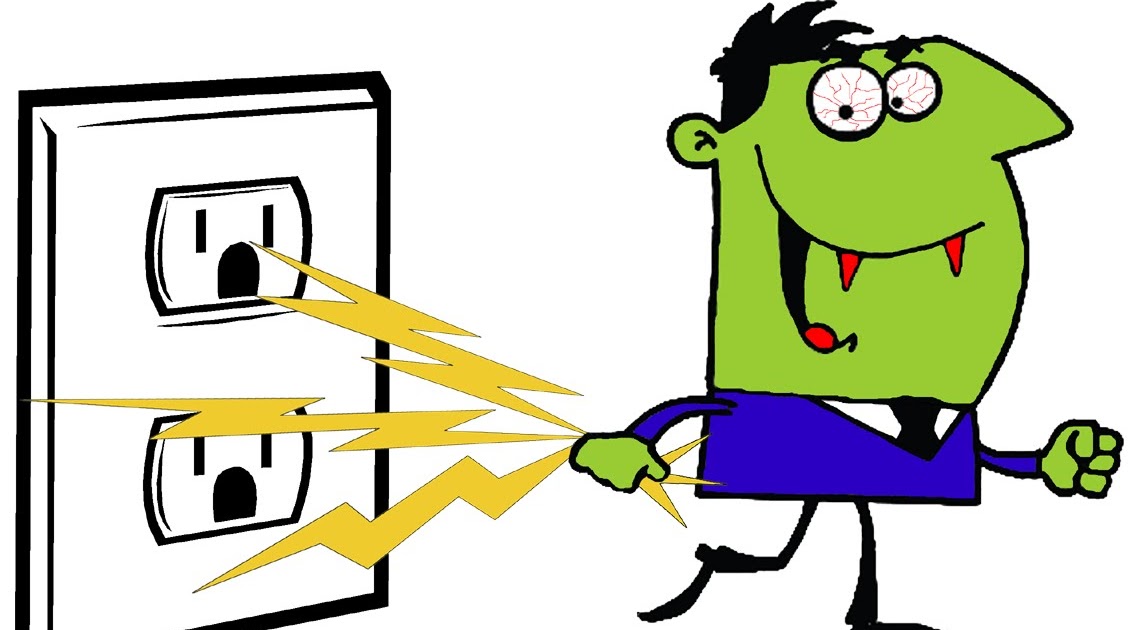12 Popular Green Myths Debunked
6 min read
Here I’ve debunked 12 popular green myths.
Green Myth 1: When Appliances Are Off, They Don’t Use Power
| Life The Green Way © |
Fact: Appliances and other electronic devices continue to use power even after they’ve been turned off.
Vampire power, also called “standby power,” is the energy a piece of equipment continues to use even after it’s been switched off.
Vampire power can be as high as 10 to 15 watts per appliance/device and sometimes more. When you add it all up, it’s estimated that more than 5% of your power bill can be attributed to appliances in standby mode, which equals about $4 billion consumer dollars spent unnecessarily each year.
Some “vampire” devices that rely on standby power are: televisions, air conditioners, refrigerators, computers, cell phone chargers and any other appliance that displays a clock. For more info. click here.
Green Myth 2: Small Changes Don’t Matter
Fact: If everyone thinks that what they do makes no difference, just imagine where we’d be! Small changes add up. Use the power in your wallet to make a difference in the green movement!According to Bankrate.com, recent numbers show that just a few smarter buying decisions translate to big changes in the planet. For example: When you buy paper goods for your home, e.g., paper towels, toilet paper, napkins, etc., look for products that use high percentages of recycled or post-consumer waste.
Many of the major paper manufacturers are cutting virgin forests to make the items you use, says Jennifer Powers, Natural Resources Defense Council (NRDC) spokeswoman. Fortunately, companies like Seventh Generation and Whole Foods Market’s 365 line, use recycled materials instead.
Powers says, “If everyone in the country elected to buy one package of 100% recycled napkins instead of the non-recycled variety, that act alone would save 1 million trees.” Now, how powerful is that?
Green Myth 3: Bottled Water Is Safer Than Tap Water
Fact: Tap water is safer!
Suprised? Bottled water is regulated by the Federal Drug Administration (FDA) because it’s classified as “food.” Tap water is regulated by the Environmental Protection Agency (EPA) which has much stricter standards than the FDA.
The FDA requires that water used for bottling only has to be analyzed once a week for bacteria, whereas the EPA requires large cities to test water for bacteria in an independent lab multiple times a day.
For more info., check out the FDA’s Food Facts.
Green Myth 4: It’s Not Worth Turning Down Your Thermostat When You’re Not at Home
Fact: You may be thinking you don’t want to turn down your thermostat when you leave because the furnace will have to work extra hard to get your house to a comfortable temperature again.
What you don’t know is the energy required to reheat a home is nearly equal to the energy saved when it cools down. The 8 hours a day that your empty house is cooler can save you anywhere from 5 to15% on your heating bill just by turning the temperature down 10-15 degrees, according to the Department of Energy (DOE).
For more money-saving tips check out 8 Easy Ways To Save Green.
Green Myth 5: Fluorescent Light Bulbs Are Bad Since They Contain Mercury
Fact: While it’s true that CFLs contain some mercury, not using them puts more mercury into our ecosystem.
The leading source of mercury emissions in the United States is coal-fired power plants. Yep, your good ol’ power company’s plant. CFLs use up to 75% less electricity than traditional (incandescent) light bulbs, so using them actually decreases the amount of mercury in the atmosphere.
If you’d like more information on how to properly dispose of CFLs, visit Energy Star.
Green Myth 6: You Should Wait For All of Your Incandescent Bulbs to Burn Out Before Replacing Them With CFLs.
Fact: The money you will save on your power bill by using CFLs will more than make up for the cost of both light bulbs! You ask, “How can that be true?” Over the CFLs 12,000-hour lifetime, you would save approximately $51. The energy used to make the incandescent bulb amounts to less than 1% of that.
Green Myth 7: Recycling Is More Expensive Than Trash Collection and Disposal
Fact: When done correctly, recycling programs are cost-competitive with trash collection and disposal.
Michael Shapiro, director of the U.S. Environmental Protection Agency’s office of solid waste, says this about the benefits of recycling: “A well-run curbside recycling program can cost anywhere from $50 to more than $150 per ton…trash collection and disposal programs, on the other hand, cost anywhere from $70 to more than $200 per ton. This demonstrates that, while there’s still room for improvements, recycling can be cost-effective.”
Green Myth 8: You Can Trust Products That Are Labelled As “Green,” or “Eco-Friendly”
Fact: Ever heard of “Greenwashing“?
Greenwashing is a word that is used to describe deceptive marketing, or “spin” that is used to promote a misleading perception that a company’s policies and/or products are environmentally-friendly.
Greenwashing is rampant folks. Terrachoice, an environmental marketing and consulting firm, has done many studies on greenwashing. Read their The Seven Deadly Sins of Greenwashing.
The good news is that the Federal Trade Commission has started cracking down on environmental claims that don’t pass regulatory muster (visit: www.ftc.gov and search “sorting out green advertising claims”). Also, check out the EPA’s Design for the Environment (DfE) label.
Green Myth 9: Using “Biodegradable” Products Save Landfill Space.
Fact: Most of today’s landfills are designed to keep out air, sunlight and moisture in order to prevent air and water pollution. Unfortunately, this inhibits degradation.
| Citizens For A Clean Southwest Alabama © |
The FTC defines a biodegradable product as one that will completely decompose within a reasonably short period of time under normal methods of disposal. Since most garbage in landfills won’t fall under these terms, you’re better off reducing your amount of solid waste.
The EPA claims that the average American generates nearly 5 pounds of garbage per day!
Recycle what you can and also buy products that contain “post-consumer recycled content” (this will be on the label).
Green Myth 10: You Need To “Warm-Up” Your Car Before Driving In The Winter Months
Fact: Idling for just a few minutes wastes gasoline unnecessarily (unless your car is very old). And with gas prices being close to $4.00/gallon is some areas, wasting it is dang near criminal (if definitely doesn’t make $ense)!
When cars had carburetors, engines used thicker oil that required warming up. Today’s thinner oils allow engines to be driven away sooner.
A general rule to follow: If the outside temperature is above zero degrees Fahrenheit, you can drive away within 10 seconds. For temps below zero, wait at least 30 seconds before driving.
Green Myth 11: Hanging On To Old Appliances Is A Way to Recycle
Fact: Are you kidding me??
| energystar.gov |
| energystar.gov |
Okay, so you’re not taking up space in the landfills, I’ll give you that. But you’re not really making the greenest choice either. If you have a 1970’s refrigerator, you’re using 70% more power than you would with a new model. If you are using an appliance with an Energy Star label, your savings will shoot up to around 90%!
The fact is newer appliances do more with a lot less power. If your appliance is more than 10 to 15 years old, replace it. Just make sure you do your homework before you buy.
Oh, also collectors like 1-800-Got-Junk will take your old appliances and recycle them. Cool, huh?
Green Myth 12: The Unprecedented Amount of Snow This Winter Means No Global Warming
Fact: Weather and climate are not the same thing.
Climate scientists say that the record snowfalls are consistent with climate change because warmer temperatures mean more moisture evaporating into the atmosphere, which translates into more rain, sleet and snow.
In fact, most climate scientists believe that the heating planet will produce even more frequent and more intense weather events.
Incidentally, NASA scientists say 2013 tied with 2009 and 2006 for the seventh warmest year since 1880, continuing a long-term trend of rising global temperatures.
Elena White is the founder and editor of Life The Green Way, corporate sustainability coordinator at her day job, and a “rurban” wife and mother. Learn more about her here and follow her on Twitter at @Lifethegreenway.






